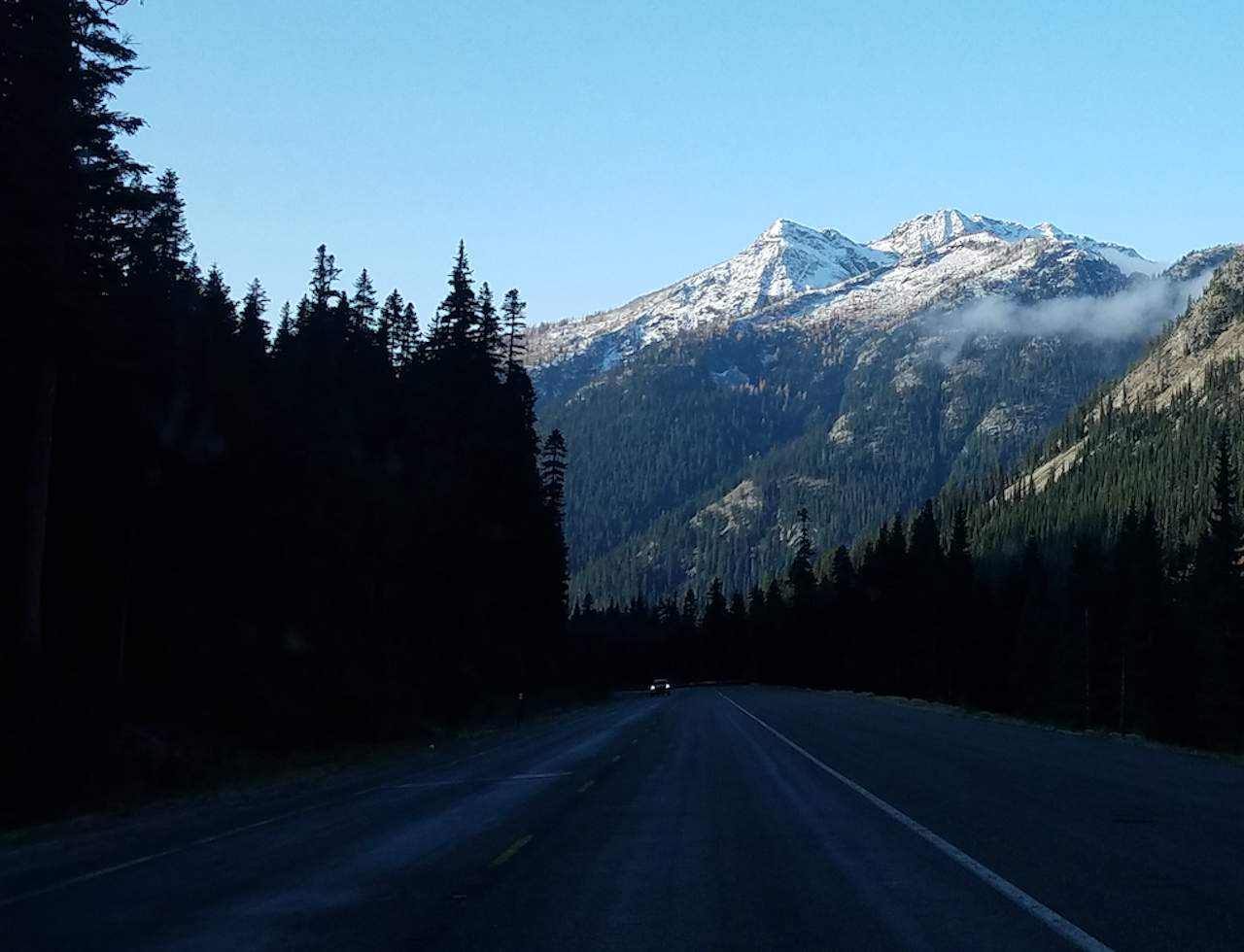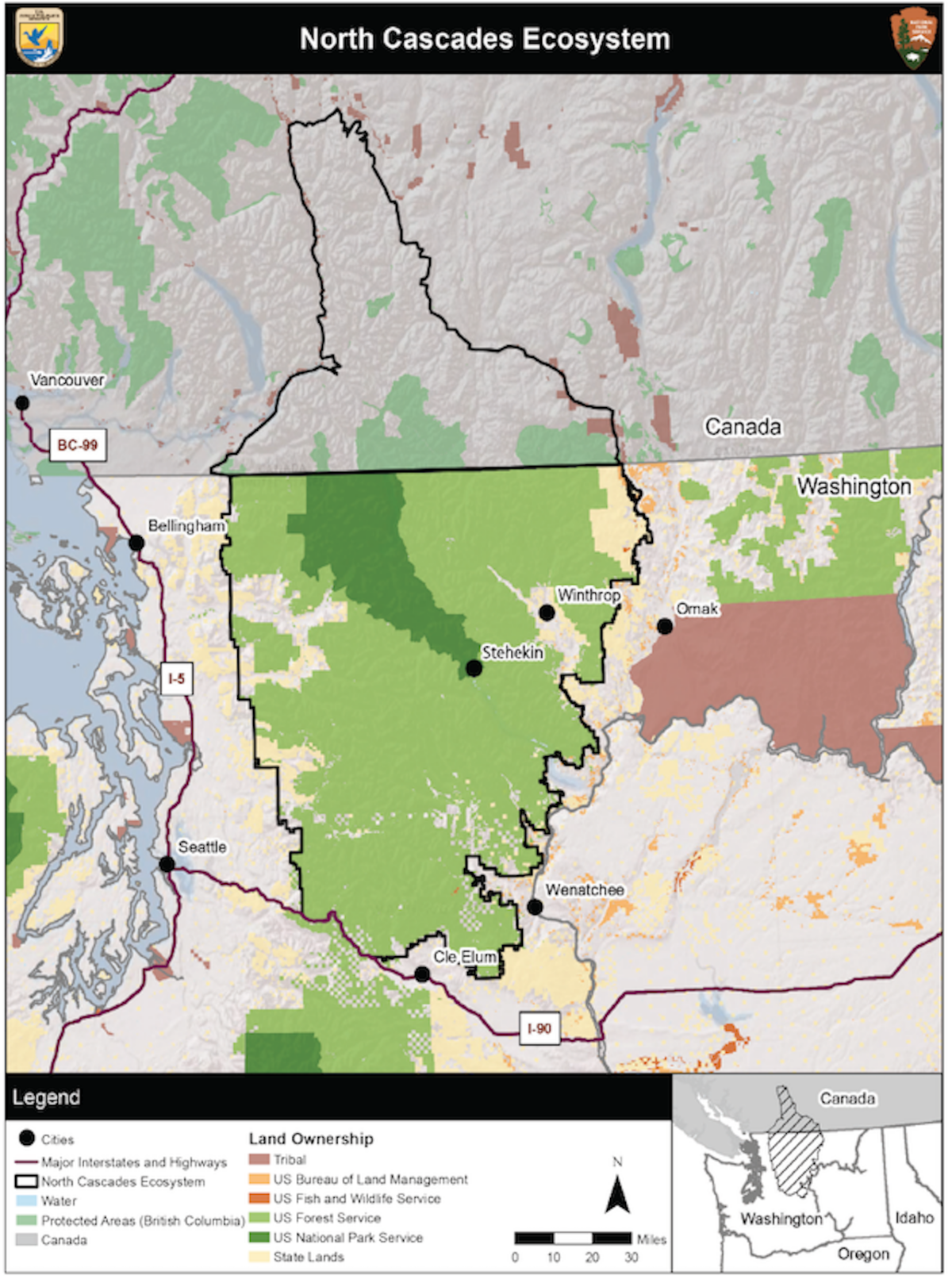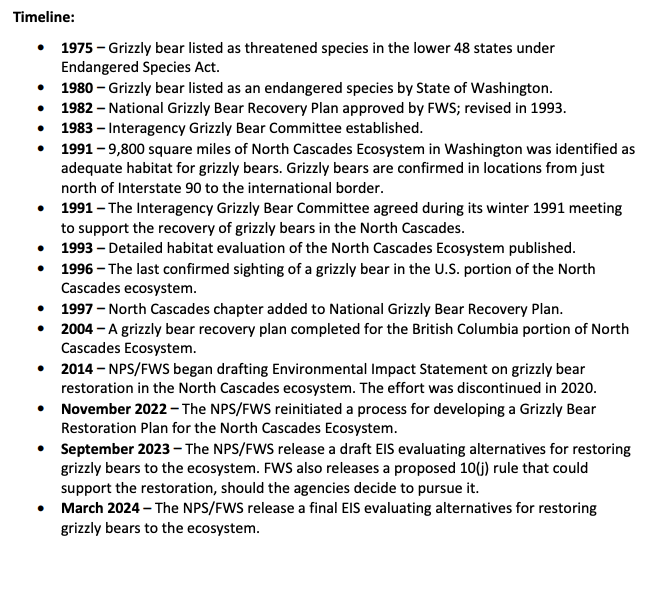
Feds Release Final EIS On North Cascades Grizzly Reintro, Want To Go 10(j) Route
Federal agencies are one step closer to reintroducing grizzly bears into Washington’s North Cascades via a nonessential population, or 10(j), designation that would give managers more latitude in dealing with Ursus arctos horribilis conflicts.

The National Park Service and U.S. Fish and Wildlife Service today announced that preferred alternative as they released their final environmental impact statement evaluating bringing the big bears back to the lands between I-90 and the British Columbia border, and the western and eastern fronts of the Cascades, and that means a final record of decision is not far off.
“After the final EIS is complete and issued to the public, a 30-day waiting period will begin. Following the waiting period, a record of decision cam (sic) be signed by the agency (or, in this case, joint agencies) thereby allowing the selected alternative to be implemented,” an FAQ from NPS and USFWS states.
Their EIS also evaluated no-action and restoration under ESA protections alternatives.
The 10(j) designation “would provide land managers and communities with additional management tools that would not otherwise be available to manage a restored population.”
The plan calls for releasing three to seven grizzlies a year for five years to a decade with a goal of creating an initial population of 25 of the bears.

No grizzlies have been confirmed in Washington’s North Cascades since 1996, according to the feds. They report they received more than 12,000 comments on the draft EIS, while hundreds of people provided direct input at local meetings.
While WDFW is barred by state law from reintroducing grizzlies on its own, the agency worked with USFWS and NPS on the EIS.
“WDFW is dedicated to our role to conserve and manage wildlife in Washington, including for grizzly bears. By selecting an action alternative that includes the 10j rule, the federal agencies have set the stage for significant management flexibility should restoration implementation occur,” said Eric Gardner, state Wildlife Program director, in a statement posted late this morning.
The process has seen previous steps toward reintroduction before being paused in 2020 and reinitiated in 2022.


